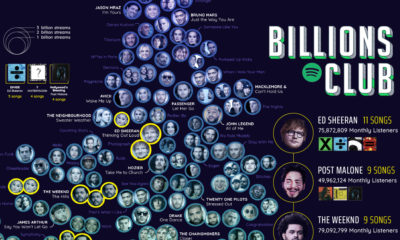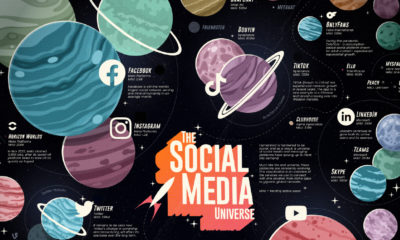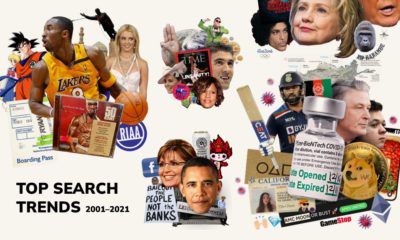The Modern Era of Investor Relations
How New Media has Ushered In a Better Experience For Investors
“Modern Era of Investor Relations” infographic presented by: Dajin Resources
The internet’s explosion in popularity is attributed mainly to the invention of the first graphical web browser in 1993. Since then, the way investors have gotten information on companies and financials has changed dramatically.
Let’s take a look at how modern company websites and social media create a better experience for investors today.
How Investors Get Company News Releases
Then: Companies used to issue press releases to get information to shareholders and potential investors through snail mail and thermal fax paper. Companies would also cold call potential investors to let them know the gist of the news.
Now: Information is automatically distributed in real-time when it becomes available. Websites, social media, email blasts, newswires, and third-party websites get the information out seconds within it being public.
How Investors Do Due Diligence
Then: Investors could not seek out information easily. They relied on new tips from their stock broker, or were contacted by companies directly. It was difficult to fact check information, and investors relied heavily on newsletter writers to supply due diligence and tips.
Now: Today, information is so abundant through the internet that verifying its validity is the most important concern for investors. Reputation is key. Investors can get and fact check information from company websites, government securities websites, social media, blogs, analysts, chats, email blasts, phone calls, professional investor services, newsletter writers, and local conferences.
How Investors Check Stock Prices
Then: Investors could check the price in a newspaper or find it scrolling on a stock ticker on TV. For smallcap stocks, they relied on their brokers. In the early internet days, delayed stock quotes could be found.
Now: Investors can get stock quotes in real-time for free or for cheap. These provide the full depth, showing bids and asks in the primary market to give an accurate picture of the stock’s activity.
How Important is it to Provide Investors With What They Need?
Today there are more tools in each company’s communications toolkit than ever before. A Thomson Reuters Extel whitepaper in 2012 found that the Top 10 European companies with Best Shareholder Communications outperformed the market by 28.8% since 2007.
Keys to Modern Media
Here’s how companies can take steps to help ensure the best experience for investors. Modern website Today’s company websites are a step above the websites of even 5-10 years ago. Not every company has adopted these new possibilities – but for those that have, the investor experience is much better. Anatomy of a modern website:
Dynamic homepage: Populated by up-to-date content that is always changing Different perspectives: Company news is accompanied by different perspectives on the sector and industry Up-to-date media: Presentations, maps, fact sheets, photos, infographics, and other rich media are current Easy to read and navigate: The website is simple and intuitive, which allows investors to find what they need.
Other considerations to make a website top-notch include: having accessible stock quote on the company, easy email newsletter signup option, objective feel that is not too self-promotional, and real photos of company instead of stock images. Website quality and accuracy is paramount, as a recent investor survey by SNL IR Services found that 60% of investors visit company websites either daily or weekly. This is why the teams behind modern websites monitor analytics very closely, such as bounce rates, open rates, the reach of posts, and keywords. It’s important to make the website as useful as possible, otherwise it can be detrimental to the company’s success.
Social Media
Social media has come a long way in the last five years. Today, almost 80% of institutional investors use social media as a regular part of their workflow. Good social media content allows investors to:
Get breaking news on stocks they follow Gain perspectives on different topics Interact with other investors or industry people Become thought leaders on topics
To help investors accomplish these goals, its important for companies to curate their content to cover other topics and perspectives outside of their company and sector.
Third-Party Media
Media websites provide a means for coverage and eyeballs for all stocks, regardless of size. Strong media from reputable networks can increase awareness of a stock and liquidity. However, like social media, such coverage can be a double-edged sword. If companies are represented unprofessionally by third-party media, it can backfire. Therefore, it is important companies do their best to ensure that coverage of their stock is reputable, professional, fair, and accurate.
on Even while political regimes across these countries have changed over time, they’ve largely followed a few different types of governance. Today, every country can ultimately be classified into just nine broad forms of government systems. This map by Truman Du uses information from Wikipedia to map the government systems that rule the world today.
Countries By Type of Government
It’s important to note that this map charts government systems according to each country’s legal framework. Many countries have constitutions stating their de jure or legally recognized system of government, but their de facto or realized form of governance may be quite different. Here is a list of the stated government system of UN member states and observers as of January 2023: Let’s take a closer look at some of these systems.
Monarchies
Brought back into the spotlight after the death of Queen Elizabeth II of England in September 2022, this form of government has a single ruler. They carry titles from king and queen to sultan or emperor, and their government systems can be further divided into three modern types: constitutional, semi-constitutional, and absolute. A constitutional monarchy sees the monarch act as head of state within the parameters of a constitution, giving them little to no real power. For example, King Charles III is the head of 15 Commonwealth nations including Canada and Australia. However, each has their own head of government. On the other hand, a semi-constitutional monarchy lets the monarch or ruling royal family retain substantial political powers, as is the case in Jordan and Morocco. However, their monarchs still rule the country according to a democratic constitution and in concert with other institutions. Finally, an absolute monarchy is most like the monarchies of old, where the ruler has full power over governance, with modern examples including Saudi Arabia and Vatican City.
Republics
Unlike monarchies, the people hold the power in a republic government system, directly electing representatives to form government. Again, there are multiple types of modern republic governments: presidential, semi-presidential, and parliamentary. The presidential republic could be considered a direct progression from monarchies. This system has a strong and independent chief executive with extensive powers when it comes to domestic affairs and foreign policy. An example of this is the United States, where the President is both the head of state and the head of government. In a semi-presidential republic, the president is the head of state and has some executive powers that are independent of the legislature. However, the prime minister (or chancellor or equivalent title) is the head of government, responsible to the legislature along with the cabinet. Russia is a classic example of this type of government. The last type of republic system is parliamentary. In this system, the president is a figurehead, while the head of government holds real power and is validated by and accountable to the parliament. This type of system can be seen in Germany, Italy, and India and is akin to constitutional monarchies. It’s also important to point out that some parliamentary republic systems operate slightly differently. For example in South Africa, the president is both the head of state and government, but is elected directly by the legislature. This leaves them (and their ministries) potentially subject to parliamentary confidence.
One-Party State
Many of the systems above involve multiple political parties vying to rule and govern their respective countries. In a one-party state, also called a single-party state or single-party system, only one political party has the right to form government. All other political parties are either outlawed or only allowed limited participation in elections. In this system, a country’s head of state and head of government can be executive or ceremonial but political power is constitutionally linked to a single political movement. China is the most well-known example of this government system, with the General Secretary of the Communist Party of China ruling as the de facto leader since 1989.
Provisional
The final form of government is a provisional government formed as an interim or transitional government. In this system, an emergency governmental body is created to manage political transitions after the collapse of a government, or when a new state is formed. Often these evolve into fully constitutionalized systems, but sometimes they hold power for longer than expected. Some examples of countries that are considered provisional include Libya, Burkina Faso, and Chad.














